Tamper-evident packaging is more than a safety feature—it’s a strategic investment. It protects customers, prevents financial losses, and strengthens brand reputation. Yet, many businesses struggle to see its direct impact on their bottom line.
Understanding ROI is the key to making informed decisions. Secure packaging and tamper-evident solutions not only protect products but also reduce financial losses. This guide walks through how to calculate ROI, helping businesses determine whether security packaging is a worthwhile investment.
What is ROI in Tamper-Evident Packaging?
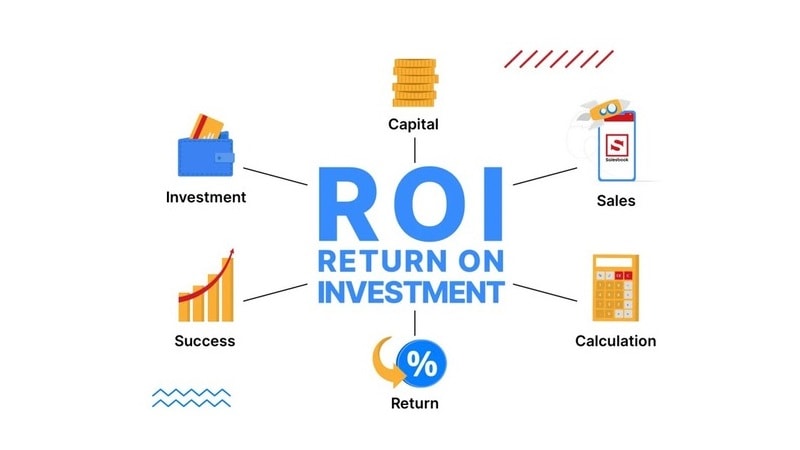
ROI stands for Return on Investment. ROI in tamper-evident packaging is a key factor when measuring the financial and strategic benefits businesses gain from using security packaging. It helps companies determine whether the cost of implementing tamper-evident solutions is justified by the value they provide.
A positive ROI suggests a worthwhile investment. It means the benefits exceed the costs. A negative ROI indicates that costs are higher than benefits. Businesses use ROI to make informed decisions. It helps them allocate resources effectively. ROI analysis is crucial for tamper-evident packaging strategies.
Tamper-evident packaging solutions include security seals, labels, and shrink bands that reveal any unauthorized access. By preventing fraud, contamination, and counterfeiting—these solutions protect both products and brand reputation. Pharmaceuticals, food, cosmetics, and electronics all use tamper-evident solutions to meet safety standards.
Key Factors Affecting the ROI of Tamper-Evident Packaging
Several key factors influence the ROI of tamper-evident packaging. These factors affect both the cost and the benefits of this security investment. Companies must carefully analyze these factors. This analysis helps them determine the true value of tamper-evident packaging solutions.
Factor 1: Initial Investment Costs
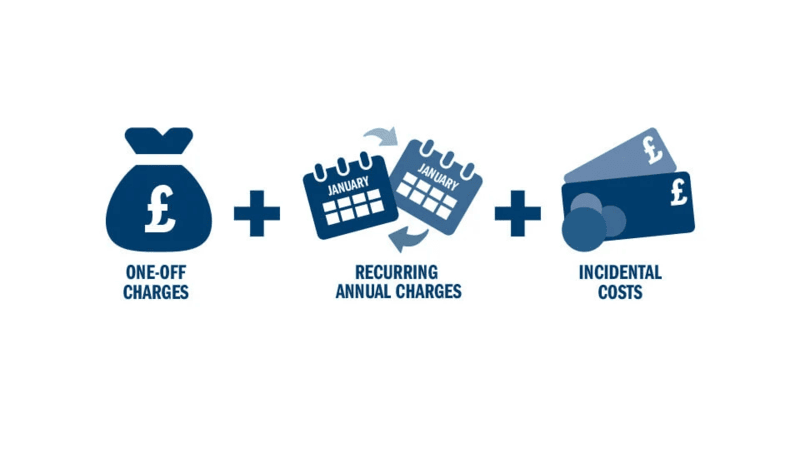
The initial investment cost is a significant factor in ROI. This cost includes the expenses for tamper-evident solutions. It covers the cost of seals, labels, and secure packaging materials. These materials often cost more than standard packaging.
Implementation costs are also part of the initial investment. Integrating tamper-evident packaging into the supply chain can be complex. It may require changes to existing processes. It might involve investing in new technologies. Training staff is also necessary. These implementation costs contribute to the total cost.
Companies must consider all these expenses. This consideration ensures an accurate assessment of the ROI. A thorough analysis of initial investment costs is critical. It allows businesses to make informed decisions about investing in tamper-evident packaging.
Factor 2: Reduction in Losses Due to Tampering and Theft
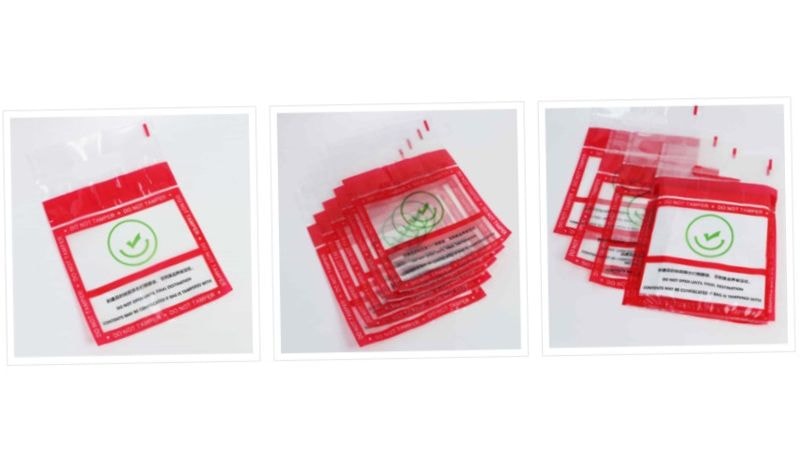
Tamper-proof packaging plays a vital role in loss prevention. It reduces losses due to tampering and theft. This is a key benefit that contributes to ROI. Visible evidence of tampering deters potential offenders.
Case studies show the effectiveness of tamper-evident packaging across industries. In retail, it minimizes theft by making unauthorized access visible. In logistics, it protects goods from being compromised during transportation. These examples illustrate the value of security investment.
Tamper-evident packaging also prevents counterfeiting. It protects brand value by ensuring product authenticity. It reduces product returns caused by tampering. This reduction in returns leads to cost savings. These benefits directly impact the ROI.
Furthermore, tamper-evident packaging enhances supply chain transparency. It enables businesses to identify weak points in their supply chain and address them effectively. This proactive approach minimizes further losses, builds operational efficiency, and amplifies the overall ROI of implementing tamper-evident solutions.
Factor 3: Compliance and Legal Benefits
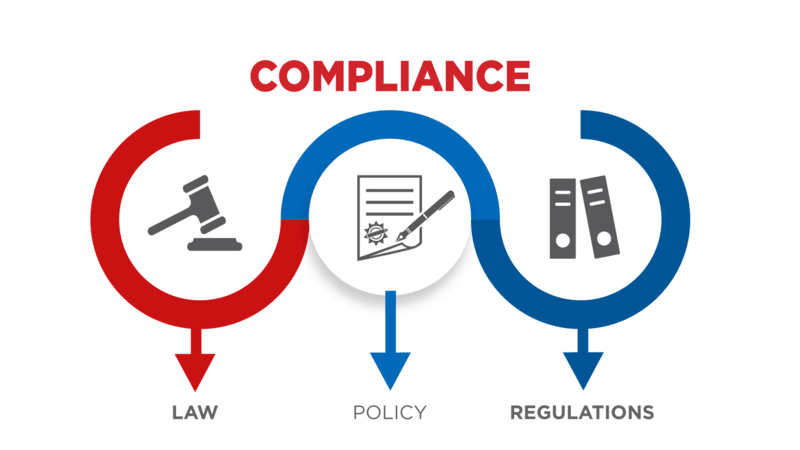
Security packaging helps businesses meet packaging compliance and regulatory requirements. Many industries have strict rules for product safety. Tamper-evident packaging solutions aid in compliance. This compliance avoids legal penalties.
Companies can avoid recalls by using secure packaging. Recalls can be very costly. They can also harm brand reputation. Tamper-evident features provide an extra layer of protection. This protection reduces the risk of contamination and ensures that products meet regulatory requirements.
Investing in tamper-evident packaging demonstrates a commitment to safety as well. It shows that companies take their obligations seriously. This can lead to legal benefits. It also helps to maintain a positive brand value. Companies that visibly prioritize compliance and safety are often preferred by consumers and business partners—increasing credibility and trust.
Factor 4: Customer Trust and Brand Reputation

Tamper-proof packaging has a direct impact on consumer trust score. Customers feel more secure when purchasing products. They appreciate the visible evidence of safety. This enhanced security contributes to a positive customer experience.
Increased customer trust leads to repeat purchases. It also fosters brand loyalty. Customers are more likely to buy from companies that protect their products. This loyalty translates to increased sales and revenue.
Tamper-evident packaging enhances brand reputation. It shows that the company values its customers. It also demonstrates a commitment to quality. This positive perception strengthens the brand in the market.
Factor 5: Operational Efficiency and Waste Reduction
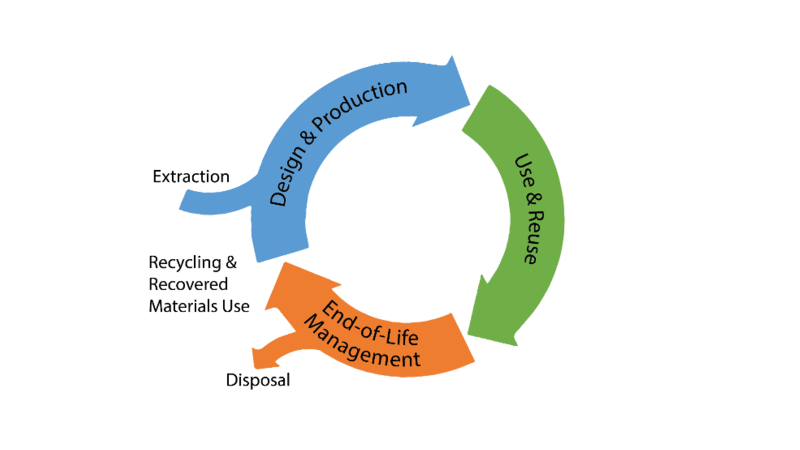
Tamper-evident packaging can improve operational efficiency. It reduces the number of damaged goods. It also decreases returns due to contamination or theft. This reduction leads to cost savings.
Quality control costs can be lowered. Tamper-evident features make it easier to identify issues. This can streamline the inspection process. It also reduces costs related to product recalls.
By reducing waste and improving efficiency, companies can see significant benefits. These benefits contribute to a positive ROI and sustainability. Tamper-evident packaging helps to optimize operations and minimize losses.
Step-by-Step Process to Calculating ROI of Tamper-Evident Packaging
Step 1: Identify the Costs of Implementation
Identifying all costs is the first step. This includes both direct and indirect costs. A thorough analysis is essential and crucial for accurate ROI calculation. The table below provides a structured way to categorize these costs:
| Cost Category | Specific Cost Items | Examples |
|---|---|---|
| Direct Costs | Packaging material costs | Tamper-evident labels, seals, materials |
| Production costs | New equipment, modifications, process changes | |
| Labor costs | Installation, operation, inspection | |
| Indirect Costs | Employee training costs | Training sessions, manuals, time spent |
| Process adjustment costs | Workflow changes, implementation time | |
| Potential impact on production | Slowdown, efficiency changes, storage |
Tracking these costs ensures an accurate ROI calculation and helps businesses plan their budgets effectively.
Step 2: Measure the Savings and Financial Benefits
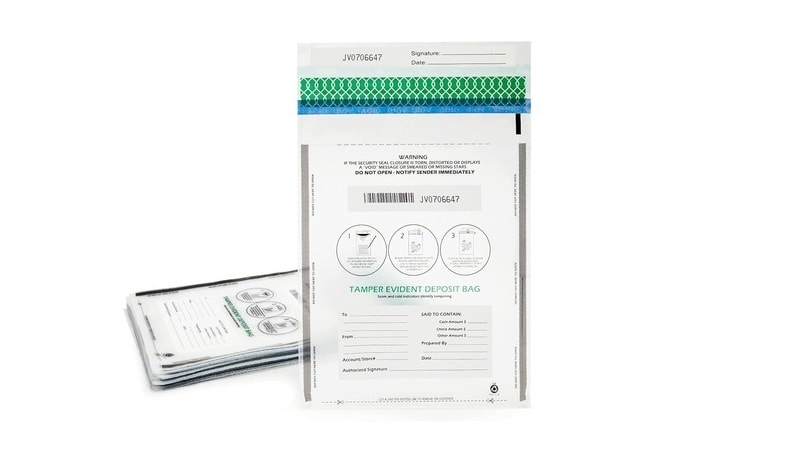
Quantifying the financial benefits of tamper-evident packaging is the next step in calculating ROI. This process involves measuring savings and financial gains.
Key financial benefits of tamper-evident packaging include:
- Lower theft and fraud-related losses
- Higher customer retention and brand loyalty
- Fewer product recalls and legal claims
Tracking these savings requires analyzing sales data, return rates, and security reports. Businesses should compare theft incidents before and after implementing tamper-evident packaging. A noticeable drop in losses indicates a strong financial benefit. Similarly, monitoring repeat purchases helps measure customer trust and long-term brand value.
Another key factor is the reduction in legal expenses and compliance costs. Companies that use secure packaging face fewer regulatory fines and lawsuits. This not only protects profits but also prevents damage to brand reputation. Over time, these savings contribute to a higher overall ROI.
The proper measurement of these savings and benefits enables a company to justify the cost. It also demonstrates the effectiveness of tamper-evident packaging. This justification is key to securing further investment in security measures.
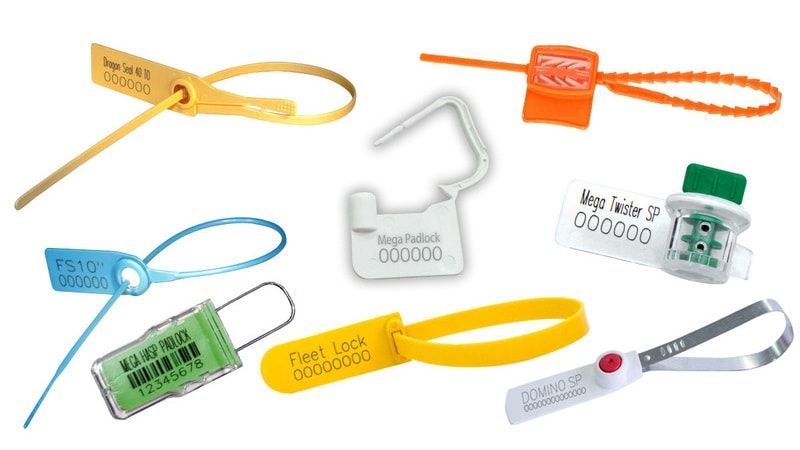
Step 3: Apply the ROI Formula
After gathering the necessary data, businesses can proceed to calculate their Return on Investment (ROI). The ROI formula acts as a financial compass, guiding businesses in understanding the true value of their security measures.
The formula for calculating ROI is:
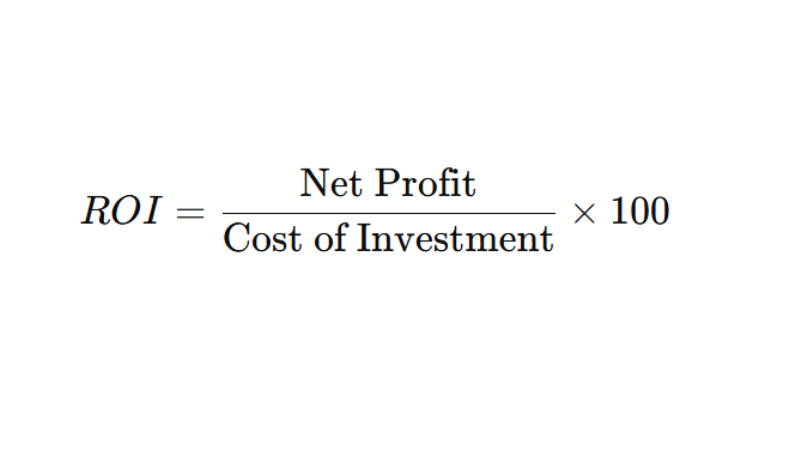
Where:
- Net Profit = Total revenue from the investment − Total costs
- Cost of Investment = Initial amount invested
For example, consider a company that invests $50,000 in a comprehensive tamper-evident packaging solution. Over a defined period, the company realizes $150,000 in savings attributed to reduced product tampering, fewer product recalls, and a noticeable increase in customer confidence.
The ROI calculation would be as follows:
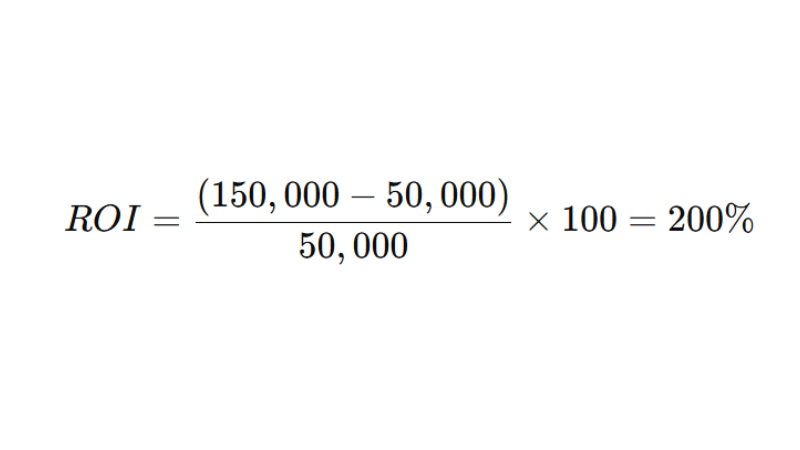
This result signifies that for every dollar invested in tamper-evident packaging, the company has generated a return of two dollars. A 200% ROI clearly demonstrates the substantial financial benefits of implementing robust security measures.
It is essential for businesses to conduct periodic ROI reassessments. Regular evaluations allow for the tracking of performance improvements over time and enable necessary adjustments to be made. However, note that fluctuations in market conditions, changes in product lines, and evolving security threats can all influence ROI.
Investment Strategies for Tamper Evident Packaging
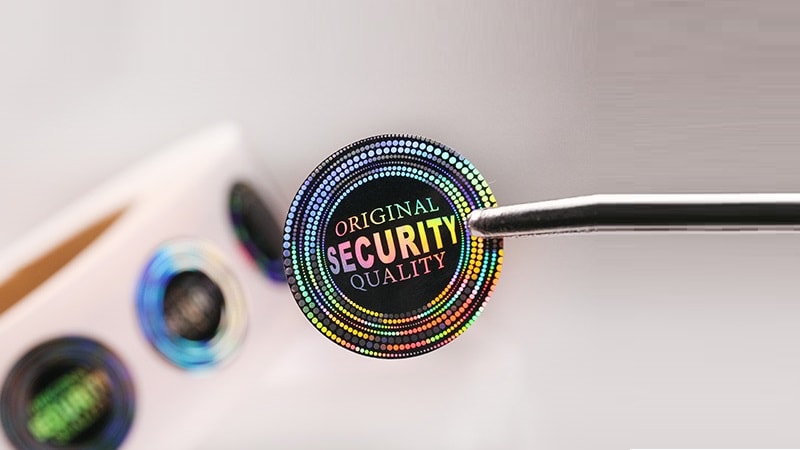
Investing in tamper-evident packaging starts with understanding market needs. Businesses should assess industry regulations and consumer expectations. Choosing high-quality materials ensures durability and security. A well-planned investment prevents costly recalls and brand damage.
Cost-effective strategies include bulk purchasing and supplier negotiations. Partnering with trusted manufacturers reduces risks. Customization options, like branding and QR codes, add value. Smart spending balances security and affordability.
Sustainability should be part of the investment plan. Eco-friendly security materials attract conscious consumers. Companies can also consider the use of technology and automation to improve the efficiency and effectiveness of tamper-evident packaging.
Companies can also consider the potential harm and risk associated with not investing in tamper-evident packaging. Investment in tamper-evident packaging can be justified by calculating the ROI and ROSI. ROI stands for Return on Investment. ROSI means Return on Security Investment. These metrics help evaluate the financial benefits.
Implementing Tamper Evident Packaging Solutions
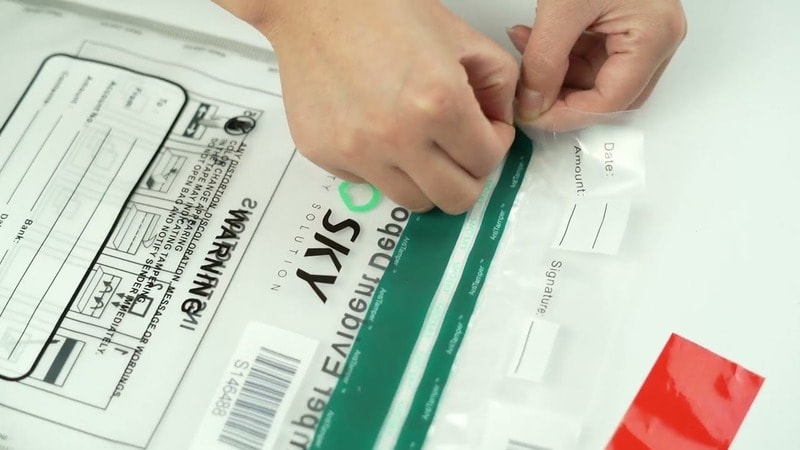
A smooth implementation starts with assessing security risks in the supply chain. Identifying weak points helps businesses choose the right tamper-proof materials. Tamper-evident labels, tapes, and tamper-evident bags provide versatile options. Businesses must consider product type, shipping risks, and customer handling.
Training staff on proper application is essential. Employees must follow strict protocols to prevent errors. Staff should learn how to properly use seals, detect tampering, and follow security protocols. Clear instructions ensure consistency and reduce errors.
Quality control is vital after implementation. Regular checks ensure the packaging’s integrity. This involves inspecting seals and labels. It also means verifying other tamper-evident features. A streamlined process minimizes vulnerabilities.
Customer awareness also plays a role in successful implementation. Providing tamper-evident packaging details on product inserts or websites builds trust. Finally, adapting strategies based on real-world challenges ensures lasting security!
FAQs
How long does it take to see the ROI of tamper-evident packaging?
Businesses often see ROI within months to a year. Savings from reduced theft and recalls add up quickly.
What are the best industries for security packaging investment?
Retail, pharmaceuticals, food, and electronics benefit the most. Any industry handling valuable or sensitive products should invest.
Can small businesses afford tamper-evident solutions?
Yes, many cost-effective options exist. Small businesses can start with basic seals and labels to enhance security.
Conclusion
Investing in tamper-evident packaging strengthens product safety and prevents fraud. Calculating ROI helps businesses understand financial gains from reduced theft, fewer recalls, and improved efficiency. Security packaging not only saves money but also boosts customer confidence. And long-term benefits make it a valuable investment.
Boost the ROI of Tamper-Evident Packaging with Shosky Security Solutions!
Shosky Security offers quality tamper-evident solutions to boost your ROI. Our solutions help businesses cut costs, prevent fraud, and build customer trust. So, ready to enhance security and maximize ROI? Contact us today for expert solutions!

